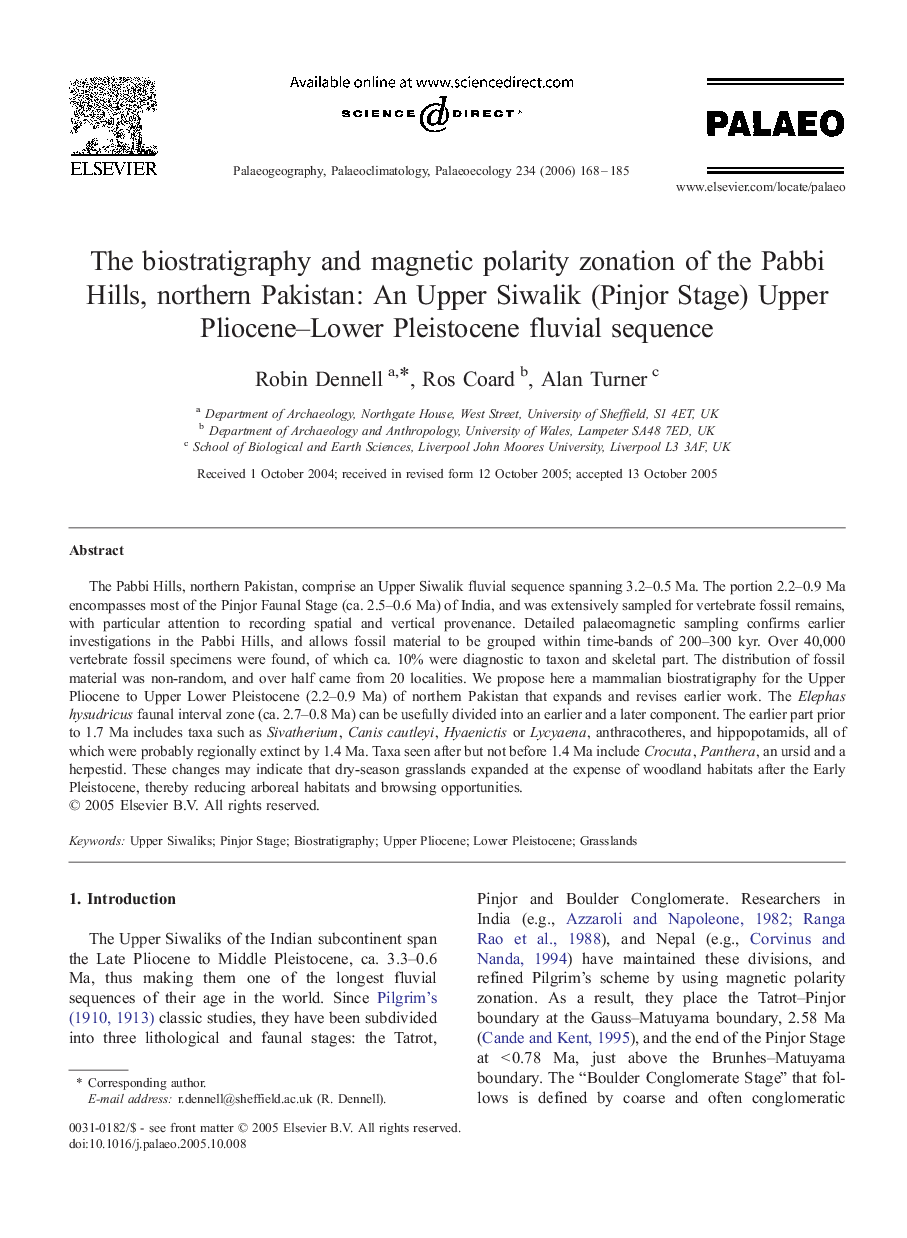| Article ID | Journal | Published Year | Pages | File Type |
|---|---|---|---|---|
| 4469559 | Palaeogeography, Palaeoclimatology, Palaeoecology | 2006 | 18 Pages |
The Pabbi Hills, northern Pakistan, comprise an Upper Siwalik fluvial sequence spanning 3.2–0.5 Ma. The portion 2.2–0.9 Ma encompasses most of the Pinjor Faunal Stage (ca. 2.5–0.6 Ma) of India, and was extensively sampled for vertebrate fossil remains, with particular attention to recording spatial and vertical provenance. Detailed palaeomagnetic sampling confirms earlier investigations in the Pabbi Hills, and allows fossil material to be grouped within time-bands of 200–300 kyr. Over 40,000 vertebrate fossil specimens were found, of which ca. 10% were diagnostic to taxon and skeletal part. The distribution of fossil material was non-random, and over half came from 20 localities. We propose here a mammalian biostratigraphy for the Upper Pliocene to Upper Lower Pleistocene (2.2–0.9 Ma) of northern Pakistan that expands and revises earlier work. The Elephas hysudricus faunal interval zone (ca. 2.7–0.8 Ma) can be usefully divided into an earlier and a later component. The earlier part prior to 1.7 Ma includes taxa such as Sivatherium, Canis cautleyi, Hyaenictis or Lycyaena, anthracotheres, and hippopotamids, all of which were probably regionally extinct by 1.4 Ma. Taxa seen after but not before 1.4 Ma include Crocuta, Panthera, an ursid and a herpestid. These changes may indicate that dry-season grasslands expanded at the expense of woodland habitats after the Early Pleistocene, thereby reducing arboreal habitats and browsing opportunities.
